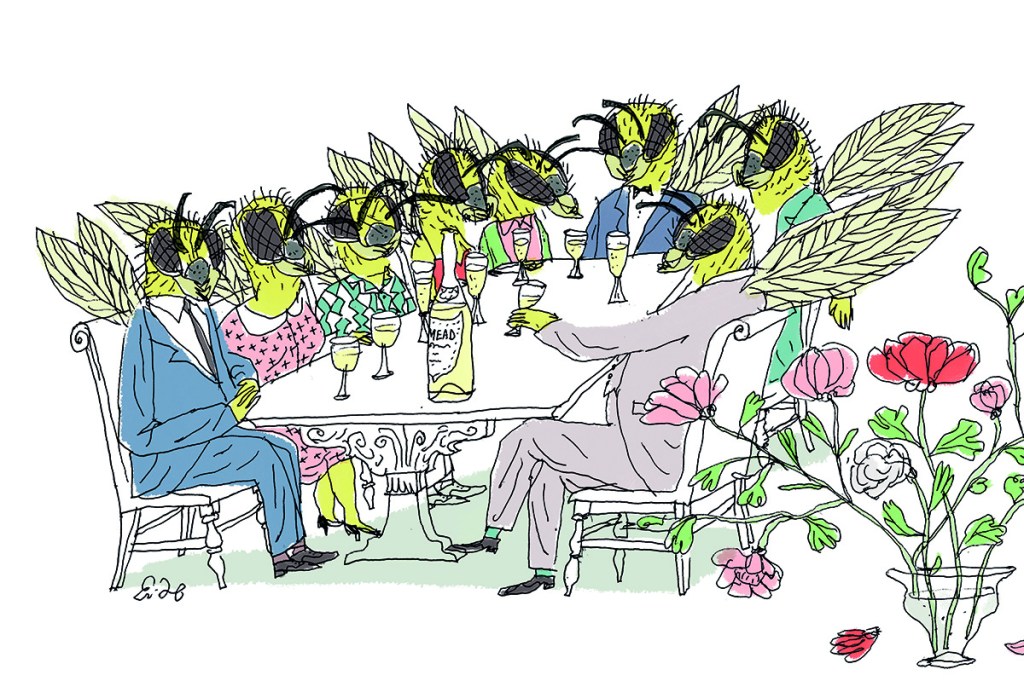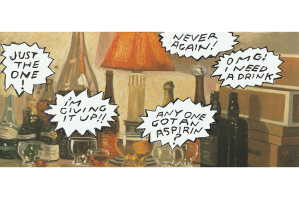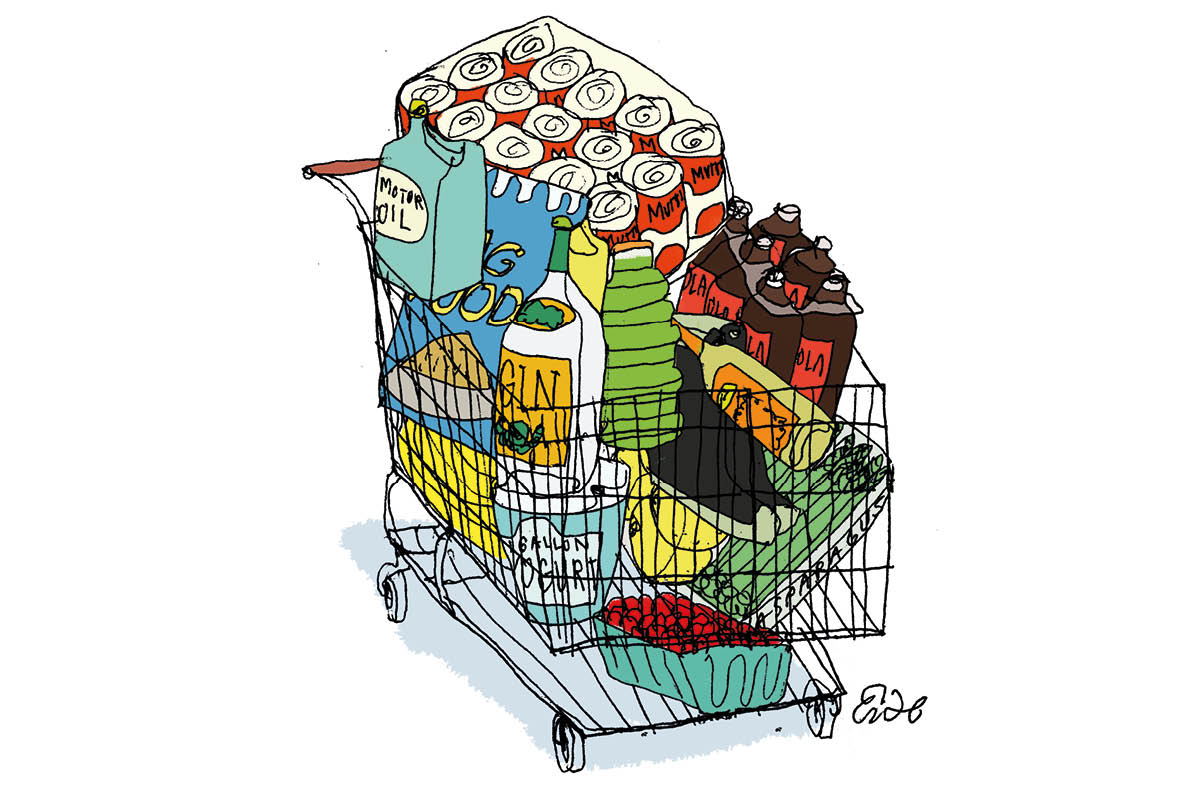I used to be terrified of homemade alcoholic drinks. Someone would bring out the elderflower champagne at a picnic, and I’d wave it away: ‘I’d love to. But I’m driving…’ Bottles of homemade cabernet would be pressed on me with irrepressible warmth at Christmas time; I’d accept them with a lying smile on my lips and an inward resolution to boil the contents for seven hours with sugar, oranges and cinnamon sticks and fob it off on guests as mulled wine.
And for my narrow-minded ways I now repent. As I must, because with maturity comes the realization that, as Solzhenitsyn said, there is no us and them. The line dividing good from evil, the poised socialite from the homemade-liquor inflictor, cuts through the heart of every man. I’d become expert at detecting the maniacal glitter in an acquaintance’s eye that announces he is about to spring a beer of his own making upon the assembly. Little did I realize that seeds of the same mania lurked in my own psyche.
Mere hours before writing these lines, I found myself tying a navy silk ribbon around a swing-top bottle of homemade mead with a handwritten label: ‘HONEY MEAD — BOTTLED APRIL 2021’. I shall be pressing the beribboned bottle upon a friend shortly. I hope this doesn’t mean our friendship is over, but I can’t help it. I was bitten by the mead bug, and thanks to beginner’s luck (and the fact that basic mead recipes are pretty much failproof) I’ve begun handing out bottles of pale yellow honey mead, clear enough to read newsprint through (that’s a mark of readiness), runny as lemonade but not as sweet as you might think: the sort of thing you’d like to sip from a chilled glass at four o’clock of a July afternoon.
Or so I fondly imagine. Whence comes this mead madness? I don’t know. I’ve always made a point of avoiding medieval-themed fantasy. No one could accuse me of overenthusiasm for Lord of the Rings. Nor do I have any desire to live like a Viking. Mind you, I do like medieval monks, so there’s that.
One summer bees arrived chez Stannus. First one lovely yellow hive, in and out of which little golden warriors zoomed all summer; then the next year another five, blue and brown. Set on the edge of a meadow against the trees, the poet Yeats, had he been privileged to contemplate them, would have thought himself on the Isle of Innisfree in a ‘bee-loud glade’.
How peaceful to sit near the hives on a hot afternoon, watching inbound and outbound air traffic, occasionally feeling like a modern-day St Francis as a bee lands on you and crawls about in friendly fashion. Of course, tact is required to avoid being stung. You have to stay out of their flight paths; they like a clear final approach to the hive entry. And the pros say you should sing songs to them to keep them calm.
Sounds simple, right? I’ve noticed that experts world-round always seem to leave out the really important information. What kind of songs do bees like? Classic rock? Country & Western? Opera? Here you are, risking your skin, and the experts can’t be bothered to mention whether you should be channeling Joni Mitchell, Justin Bieber or Cecilia Bartoli. So, stick with easy listening favorites, I guess — but what if the bees are real music snobs? Even mentioning Céline Dion might get you stung to death.
When in doubt, go classic: be like the medieval monks and chant the ‘Kyrie’. In the presence of 150,000 little stingers, ‘Lord have mercy’ is precisely the message you want to send, for as both entomologists and insurance companies tell us, bees are an Act of God. It worked beautifully for me, and I was only stung once, on a day when I happened to be chatting with one of the beekeepers about Charlie Puth.
You can see why after all this getting to know the bees, I wanted to try something with their honey. What do you do with honey? It’s good on hot buttered toast, in tea and as a natural beauty treatment. Other than that, you make mead with it. The beekeepers graciously allowed me several pounds of wildflower honey, and after immersing myself in several zillion mead-related Reddit pages, I began a micro-meadery in the garage.
The comforting thing about mead is that unlike canning, of which I am terrified because of the risk of botulism, mead making is quite safe. If something toxic happens, you are alerted by various horrible odors and growths on the liquid’s surface. This is reassuring since I don’t much fancy the notion of accidentally poisoning all my nearest and dearest and ending up alone in the world. And the horrible odors and growths are easily avoided by obsessive sanitization.
I chose my mead recipe, a very simple beginner’s method: 8 ⅔ cups of honey, 1 ½ US gallons of water, a sachet of champagne yeast and a dab of Marmite. (Marmite is made from yeast extract — dead yeast cells from beer-brewing, as a matter of fact — and thus is the ideal nutrient for living yeast which, I’ve learned, is a cannibalistic little beastie. You can, if you’re determined to go by the book, buy proper yeast nutrient.) You stir the ingredients up in a fermenting bucket, a regular plastic bucket with an airtight lid in which a hole has been drilled for the airlock. The airlock — which you fill with vodka — allows carbon dioxide to escape but prevents new air from throwing off the fermentation process. The concoction is then called must, and it must sit in its bucket for a few weeks, carrying out a mystical process known as primary fermentation.
Stage two requires one of those cool glass carboys. You can buy them on Amazon, but they look thin and they’re not cheap. I popped into my local winemaking store and the friendly proprietor sold me a six-gallon one out of heavy glass for so low a price that I felt quite guilty. (He also generously lent me a fermentation bucket and threw in champagne yeast and sanitizing powder for free.) The must is racked off or, in layman’s terms, siphoned into the glass carboy, leaving a thick layer of dead yeast sediment behind. At this stage it tastes reassuringly alcoholic though a bit fierce, like paint thinner. You then forget about it for a few months while it ages and fills the garage with a sweet, yeasty odor.
I began my mead on October 12, racked it off on November 8, and left it until late March to bottle in time for Easter. It was still not quite right, a bit yeasty tasting, which can happen when too many dead yeast cells are floating in the liquid — so I only bottled half and waited until late May for the sediment to sink to the bottom. It was light, floral-tasting, pale and clear, of the consistency of white wine and quite dry. Some preferred it with a little honey syrup, but I liked it as it was. The verdict generously issued by my nearest and dearest: delicious.
This article was originally published in The Spectator’s July 2021 World edition.

























